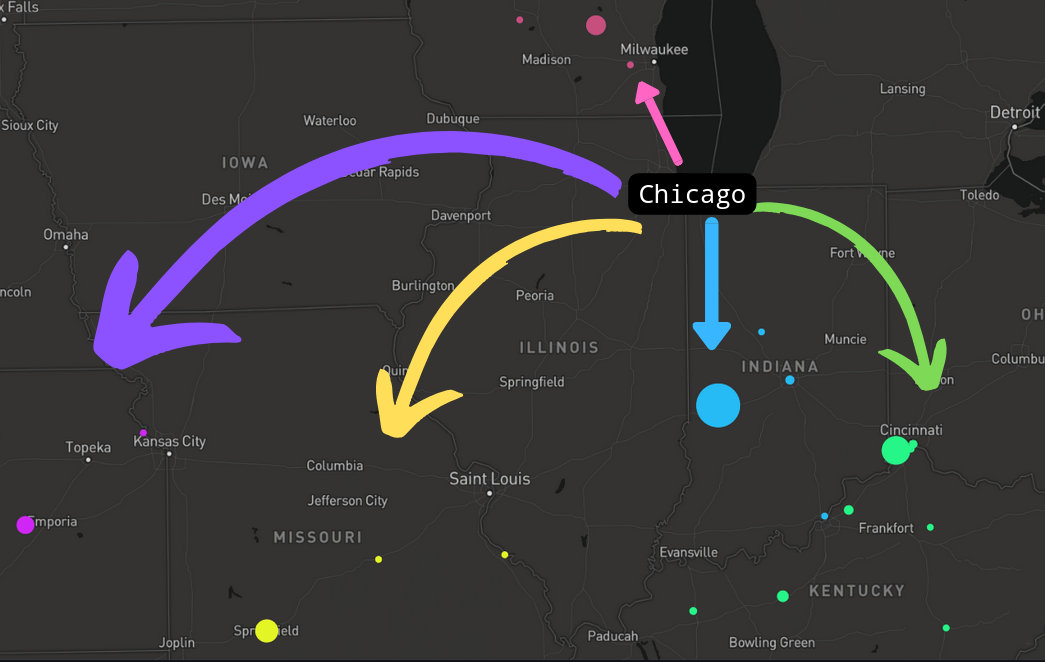
ICE Facility Data
Many New Facilities Shown, Some Crowded
ICE provides year to date statistics from immigrant detention facilities located in the United States and overseas. The data is aggregated from ICE field offices weekly, which is then uploaded to their website and available for download here: https://www.ice.gov/detain/detention-management
". . . ICE confirms the integrity of the data as published on this site and cannot attest to subsequent transmissions. Data fluctuate until “locked” at the conclusion of the fiscal year . . . These statistics are made available to the public pursuant to the Fiscal Year 2020 Department of Homeland Security Appropriations Bill." - ICE detention statistics header
When a prisoner enters an ICE detention center they are classified as either a non-criminal, or criminal. They can then take on other sub-categorical system classifications, for example a prisoner could be classifed as a non-criminal with a health issue, at which point they are placed into a medical 'protective custody' unit. Other segregative units prisoners might be placed in are: disciplinary units, facility security threat units, mental units, or pending investigation of disciplinary violation units. Moreover, some prisons are male, female only, or co-ed.
The segmentation and segregation of prisoners models some state prisons architecture. Prisoners are often cycled through many segregative units and even transferred to other detention locations. These transfers may be due to unit capacity limits among the various segregative units. To transfer prisoners, CoreCivic detention centers use large 'Sprinter' vans modified for the secure transfer of prisoners. The transfers are frequent with incoming or outgoing transfers within or outside regional areas of responsibility.
Excessive movement has resulted in confusion among family and friends attempting to locate a loved one. And while ICE administration brushes off this concern and applauds their actions as 'deterrence', it raises ethical concerns regarding human rights. It is unclear if ICE is recording the number of prisoners in need of prescription medication. Some prisoners were on medication prior to ICE apprehension; now locked up, they are unable to access prescribed medication. As a result of ICE mismanagement, inmate death due to illness and lack of required medication, continues to rise in 2025.

Areas of Responsibility and Operations
ICE detention prisons and collaborating local jails fall within a local area of responsibility. Regional capitals of these areas of responsibility are usually larger cities such as Dallas, Atlanta, Boston, Denver, Phoenix, New Orleans, Miami, Chicago and Houston. Undocumented people are captured from these metro areas and transported to regional detention centers. Once booked and processed into the jails, the prisoner can expect to stay an average of 60 days. [1]

Guaranteed Minimum Number of Prisoners Needed
One variable affecting frequent transfers, is the data series 'guaranteed minimum' which is located in the ICE statistics spreadsheet. Guaranteed minimum is the number of prisoners ICE jails must have at all time. These minimum figures are conditions as part of contracts. Regional overseers have learned to use intentional mismanagement and overcrowding as an underhanded method to advocate for more federal ICE prison funding, expansion, and generation of prison vendor business (federal and state contracts for support services such as food , commisary goods, phone / technology maintainers, prison vehicle maintenance, and construction).
Some of the larger detention centers in Texas and Louisiana are over the 'guaranteed minimum' prisoners by several hundred. It's likely they will be receiving large portions from the new 2025 increased annual $19 billion ICE budget. If funding and investment continue at its current rate, in a decade, the total invested into ICE prisons and their operation - excluding new hardware, or software technology contracts - will exceed (in 2025 dolllars) the $800 billion invested into U.S. society during President Roosevelt's New Deal programs, and Works Progress Administration (1930's great depression era).